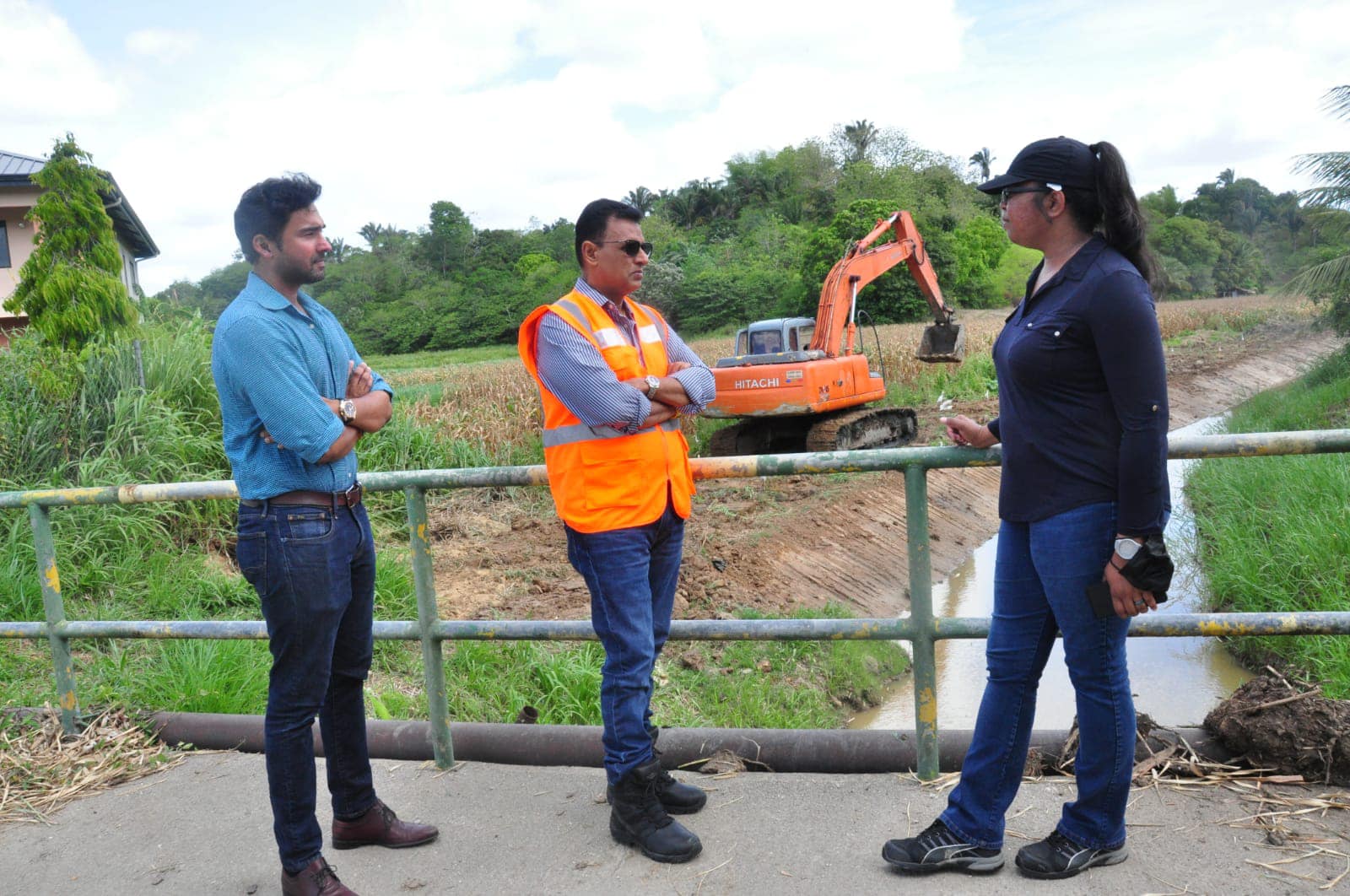In anticipation of this year’s rainy season, Works and Transport Minister Rohan Sinanan says the Government has embarked on its most aggressive flood mitigation programme ever.
Sinanan, speaking in Diego Martin on Sunday at the site of the new overpass project, revealed that the Works Ministry oversaw more than 500 desilting projects but he admitted there’s only so much they can do.
“We are on a very aggressive plan to desilt where we can, widen where we can, trying to create more capacity so that once that doesn’t occur, we have some level of storage space and just hope for that fast runoff.
“We will do our part, all right? But look at what is happening with flooding around the world. Look what happened in Italy a couple of days ago where they got almost six months rainfall in 36 hours. There’s no way you could engineer for that. Just last month in April we got, I think it was . . . month or two of rainfall in 24 hours,” Sinanan said.
The minister said in countries with the largest budgets and the most sophisticated flood mitigation systems, such as the United States and Canada, flooding is a norm, much less for T&T which has its own unique set of challenges.
Sinanan said it is difficult to anticipate what will happen in terms of rainfall and flooding, so the Works Ministry has focused on providing quick water runoff in areas prone to flooding.
He said: “Our channels could only hold a certain amount of water. We are living on an island where we have two tides that affect us everyday. If you get one month of rainfall within a couple hours, that will, the flow and the runoff we have, will not allow you to get that runoff before the next high tide.
“Once the next high tide comes in, that slows off the runoff. And that is why last year in some areas we had almost water for almost two or three weeks in the very low lying areas because the Karenne River was filled for almost two weeks and the water couldn’t run off. So everything has to do with your runoff and so on.”
He said the Ministry had encountered problems with members of the public who attempted to do their own flood mitigation work and some people who built structures on river banks were refusing to allow workers from the Drainage Division access to build back the banks.
“They damaged the banks, they build on the banks and now you literally have to go to court. Now, how are we going to deal with things like that? So this is an approach where all others have to be on deck. We have to respect the environment that we’re dealing with and we have to understand that if we all put our hands together, we should be able to get that quick runoff whenever that doesn’t go well,” he said.

